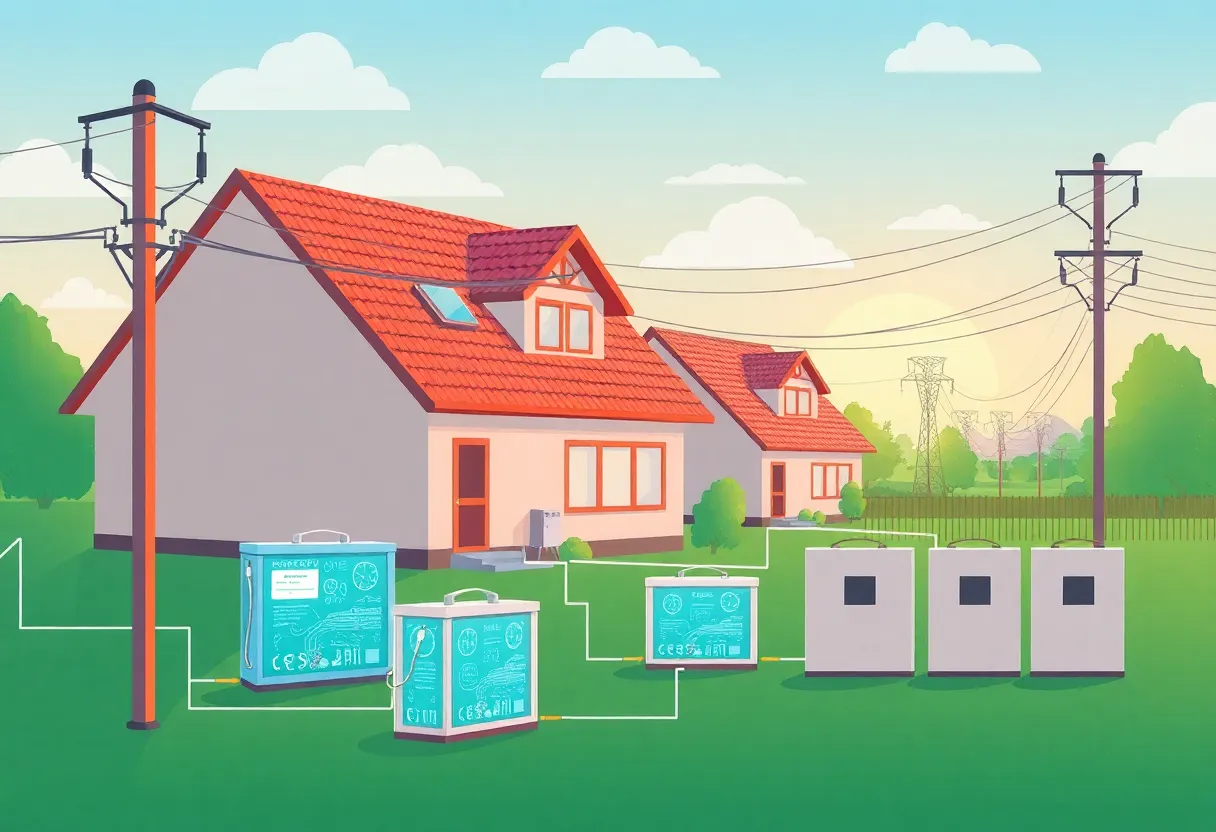California, August 21, 2025
News Summary
California’s Demand Side Grid Support (DSGS) program is facing significant budget cuts as lawmakers address a budget shortfall. This program is vital for managing the state’s energy costs and reliability, with industry leaders like Tesla playing a crucial role. A recent test showcased the efficacy of residential batteries in supporting grid demands, indicating the importance of maintaining funding. Energy advocates urge for a reconsideration of cuts, arguing that such financial support is essential for long-term energy stability and savings for residents.
California’s Demand Side Grid Support Program Faces Funding Cuts Amid Rising Energy Costs and Reliability Challenges
The future of California’s taxpayer-funded Demand Side Grid Support (DSGS) program is uncertain as lawmakers propose significant budget cuts in response to a budget shortfall. The DSGS program plays a crucial role in reducing energy costs and managing the state’s power grid, and the proposed reductions threaten to undermine its effectiveness.
Key industry players, including Tesla and Sunrun, have established dominance in the DSGS capacity by contributing substantially to its operations. On July 29, 2023, over 100,000 residential batteries were utilized in a test to produce an impressive average output of 539 megawatts (MW) between 7 and 9 p.m., functioning similarly to traditional power plants during peak demand hours. The data shows that around 88% of the output during this test came from batteries enrolled in the DSGS program, highlighting its significance in managing California’s energy needs.
A report from the Brattle Group indicates that the DSGS program could potentially generate net system cost savings ranging from $28 million to $206 million between 2023 and 2028. Predictions indicate that the capacity of DSGS batteries could double in the next three years, providing more than 1 gigawatt (GW) of rapid, reliable performance for California’s grid. Senior leaders in the energy sector have noted that there remains significant untapped potential in California’s residential battery capacity, which is currently estimated at over 1.8 GW.
Energy advocates, including the coalition led by Advanced Energy United, are urging California legislators to reconsider and restore funding commitments not only for the DSGS program but also for the Distributed Electricity Backup Assets program. They argue that cutting funding would remove proven, cost-effective solutions at a time when residents are already facing increasing affordability and reliability challenges.
Funding Requirements and Challenges
Experts in the field state that the DSGS program requires at least $75 million in funding by 2026 to continue functioning effectively. Furthermore, they advocate for sustained multi-year funding commitments to instill investment confidence within the sector. Numerous energy organizations and companies have joined the call for a permanent funding pathway for the DSGS program to ensure its survival.
Testing and Performance
California utility Pacific Gas and Electric (PG&E) has been actively involved in testing virtual power plant (VPP) programs, aimed at meeting various grid needs. These initiatives include pilot projects designed to avoid infrastructure upgrades through the aggregation of renewable resources. The July battery dispatch test provided clear evidence that the aggregated residential batteries can perform as reliably as traditional power plants, with the average output significantly aiding in meeting energy demands during peak periods.
Background on the DSGS Program
Initiated in 2022 as part of California’s Strategic Reliability Reserve, the DSGS program was designed to address grid reliability issues exacerbated by wildfires and heatwaves. The program allows residential battery owners to receive compensation for providing grid services during extreme demand events. However, the uncertainty surrounding current and future funding could hinder the program’s ability to adapt and grow, despite its initial successes and rapid increase in operational capacity.
The proposed budget cuts, including $100 million in reductions for the DSGS program, are creating concerns among stakeholders who emphasize that eliminating financial support now would severely impact California’s progress in building a reliable distributed energy resource network. While the DSGS has proven its capabilities and made strides since its inception, ongoing challenges in securing long-term funding and regulatory support remain at the forefront of discussions.
FAQ
What is the Demand Side Grid Support (DSGS) program?
The DSGS program is a California initiative designed to reduce energy costs and management of the state’s power grid by enabling residential battery owners to supply energy back to the grid during peak demand times.
What are the potential impacts of funding cuts to the DSGS program?
Funding cuts may reduce the program’s capacity to deliver reliable energy solutions and financial savings, potentially leading to grid instability and higher energy costs for consumers.
How significant was the battery dispatch test conducted in July 2023?
During the July test, over 100,000 residential batteries produced an average output of 539 megawatts between 7 and 9 p.m., demonstrating their effectiveness in meeting energy demands comparable to that of traditional power plants.
What future growth is anticipated for the DSGS program?
The Brattle Group forecasts that the battery capacity under the DSGS program could double within the next three years, indicating significant growth potential in the residential energy sector.
Deeper Dive: News & Info About This Topic
- Canary Media: California Demand Side Grid Support
- Utility Dive: California’s Virtual Power Plant
- RTO Insider: Budget Cuts Threaten California VPP Program
- Latitude Media: Tesla and Sunrun’s California VPP Test
- AI News: Virtual Power Plants in California
- Wikipedia: Demand Response
- Google Search: California Energy Costs
- Google Scholar: California Demand Side Grid Support
- Encyclopedia Britannica: Energy Conservation
- Google News: California Energy Funding Cuts

Author: STAFF HERE SAN DIEGO WRITER
The SAN DIEGO STAFF WRITER represents the experienced team at HERESanDiego.com, your go-to source for actionable local news and information in San Diego, San Diego County, and beyond. Specializing in "news you can use," we cover essential topics like product reviews for personal and business needs, local business directories, politics, real estate trends, neighborhood insights, and state news affecting the area—with deep expertise drawn from years of dedicated reporting and strong community input, including local press releases and business updates. We deliver top reporting on high-value events such as Comic-Con International, San Diego County Fair, and San Diego Pride Festival. Our coverage extends to key organizations like the San Diego Regional Chamber of Commerce and United Way of San Diego County, plus leading businesses in biotechnology, healthcare, and technology that power the local economy such as Qualcomm, Illumina, and Scripps Health. As part of the broader HERE network, including HEREAnaheim.com, HEREBeverlyHills.com, HERECostaMesa.com, HERECoronado.com, HEREHollywood.com, HEREHuntingtonBeach.com, HERELongBeach.com, HERELosAngeles.com, HEREMissionViejo.com, and HERESantaAna.com, we provide comprehensive, credible insights into California's dynamic landscape.





